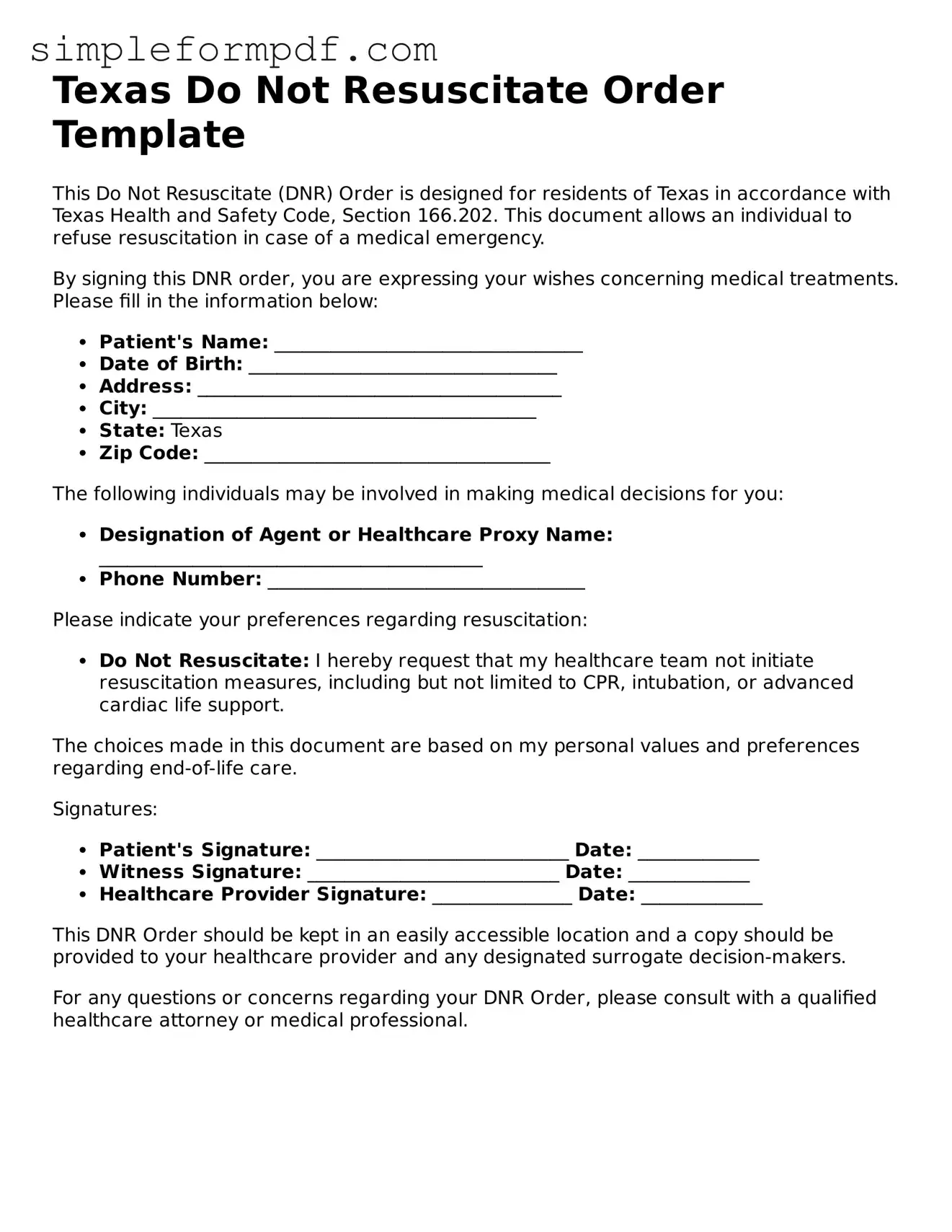Texas Do Not Resuscitate Order Template
This Do Not Resuscitate (DNR) Order is designed for residents of Texas in accordance with Texas Health and Safety Code, Section 166.202. This document allows an individual to refuse resuscitation in case of a medical emergency.
By signing this DNR order, you are expressing your wishes concerning medical treatments. Please fill in the information below:
- Patient's Name: _________________________________
- Date of Birth: _________________________________
- Address: _______________________________________
- City: _________________________________________
- State: Texas
- Zip Code: _____________________________________
The following individuals may be involved in making medical decisions for you:
- Designation of Agent or Healthcare Proxy Name: _________________________________________
- Phone Number: __________________________________
Please indicate your preferences regarding resuscitation:
- Do Not Resuscitate: I hereby request that my healthcare team not initiate resuscitation measures, including but not limited to CPR, intubation, or advanced cardiac life support.
The choices made in this document are based on my personal values and preferences regarding end-of-life care.
Signatures:
- Patient's Signature: ___________________________ Date: _____________
- Witness Signature: ___________________________ Date: _____________
- Healthcare Provider Signature: _______________ Date: _____________
This DNR Order should be kept in an easily accessible location and a copy should be provided to your healthcare provider and any designated surrogate decision-makers.
For any questions or concerns regarding your DNR Order, please consult with a qualified healthcare attorney or medical professional.
